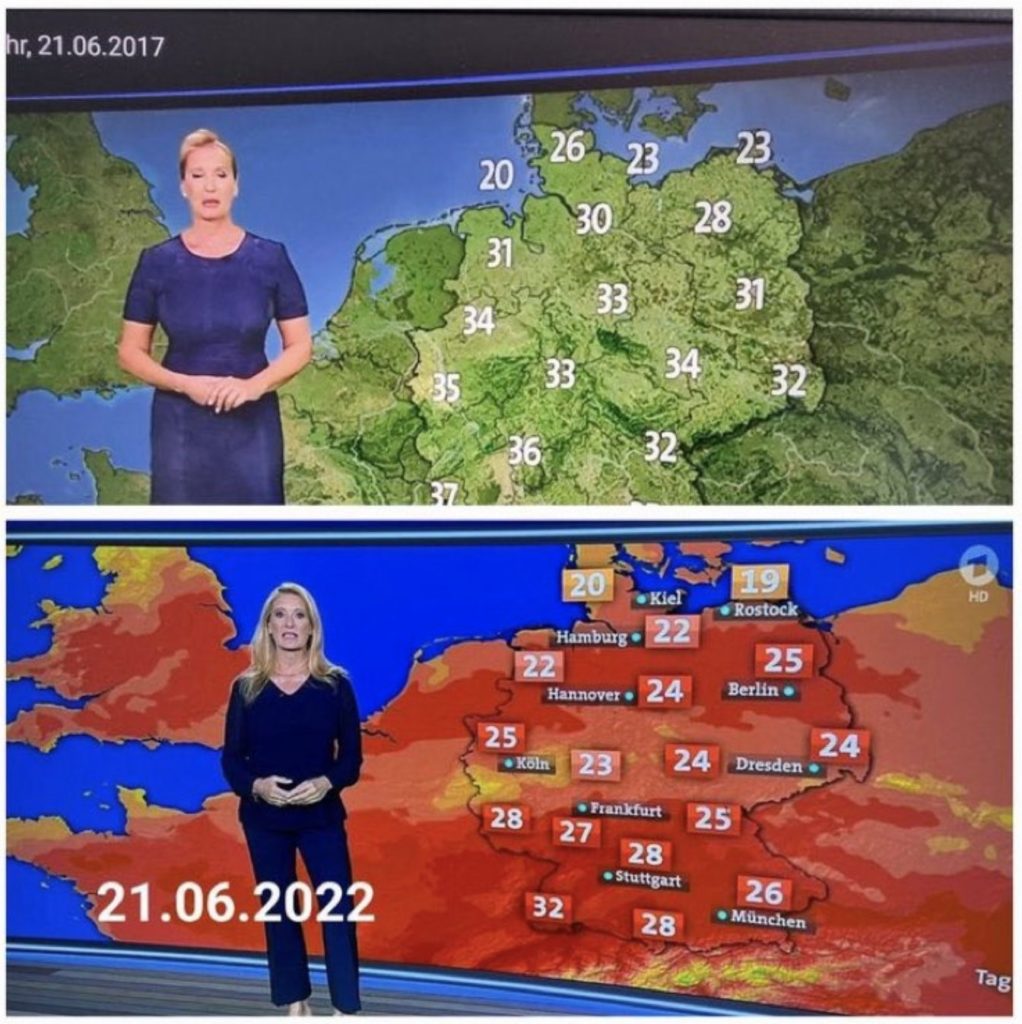Despite the scientific consensus that global warming is the result of human activity, despite the experience of increasingly extreme weather conditions, climate sceptics still have an audience. How do they reach many people and what climate disinformation is circulating in Southeastern Europe?
The Earth today is on average 1.1 °C warmer than in the pre-industrial era. Since the 19th century, we have known how the greenhouse effect works: the Earth’s surface and the lower layer of the atmosphere heat up thanks to the behaviour of greenhouse gases in the atmosphere. And since the end of the same century, we know that the natural balance is disturbed and that the problem is within us.
Measurements have existed since 1880 and say that the Earth is warmer because we have been pumping greenhouse gases into the atmosphere for the last two hundred years. Carbon dioxide enters the atmosphere through the burning of fossil fuels that we extract from the ground for profit. This “noble” goal increased the level of carbon dioxide in the atmosphere by 50% compared to the pre-industrial period. There is a scientific consensus on this today.
The first step towards translating the conclusions of the scientific community into political decisions was made in 1988 when the Intergovernmental Panel on Climate Change (IPCC) was established. The next step was the signing of the Kyoto Protocol in 1997 at the COP3 climate summit. The protocol sets before industrialized countries the goal of reducing greenhouse gas emissions by 5% in the period from 2008 to 2012, compared to 1990. At the climate summit of the United Nations COP21 in 2015, the Paris Agreement was signed. It entered into force a year later, and its long-term goal is to keep the global temperature rise below 2 ℃ by the end of the century.
At the COP27 climate summit, for the first time, we officially stopped pretending that all of humanity is equally responsible for global warming. The main issue before the summit, held at the end of 2022 in Sharm el-Sheikh, Egypt, was how to mitigate the damage caused by climate change, especially in countries that are not responsible for greenhouse gas emissions. The summit ended with the adoption of a resolution that envisages the establishment of a fund to finance damage from droughts, floods and other natural disasters resulting from climate change.
The poorest countries, responsible for only a tenth of the total greenhouse gas emissions, are the hardest hit, according to the Climate Inequality Report 2023. The richest 10%, who are responsible for almost half of the total greenhouse gas emissions, feel the consequences the least.
However, we fail to take a step further. Conclusions, recommendations, agreements and protocols are not binding, there are no penalties for warming the planet. Responsibility is avoided even as a phrase. The most powerful countries are throwing money at the problem and presenting it as “aid” to vulnerable countries. Thus, in June, the leaders of the richest countries met once again in Paris to “help” the poor countries in dealing with the climate crisis. Once again, they offered hundreds of billions of dollars in “aid” as a solution.
Who should pay the price of climate damage if not those responsible for it? And why, despite the scientific consensus and the experience of increasingly extreme weather conditions, do the voices of climate sceptics continue to reach large numbers of people? Part of the answer to that question is undoubtedly the fact that it is a lucrative business. Part of the answer may be the complete absence of a long-term vision of the transition to a sustainable economy.
Climate skepticism in Southeast Europe
The most common goal of climate disinformation in Southeast Europe is to deny the scientific consensus that humans are responsible for global warming. Most of the web portals that make up the regional editorial office of the SEE Check network have been dealing with viral disinformation aimed at disputing the fact that more than 99% of scientific studies since 2012 confirm that climate change is the result of human activity, as well as that more than 90% of climatologists claim that we are warming the planet.
Faktograf.hr thus debunked the claims of meteorologist Dusan Bizic, who in an article published by Gospodarski list, the oldest Croatian agricultural magazine, incorrectly assessed that the impact of greenhouse gases on the atmosphere is minor. Raskrinkavanje.ba exposed the incorrect claim of Belgrade climatologist Vladan Ducic that the climate changes we are witnessing would have occurred even without the human factor. Raskrinkavanje.me dealt with a viral video in which the proportion of CO2 in the atmosphere is accurately stated (0.04%), but incorrectly suggests that humans are threatened if the proportion falls below 0.02% — it is thanks to human activity that the proportion has been in the last two hundred years doubled and continuously growing. Both Faktograf.hr and Raskrinkavanje.me exposed the incorrect claims of British meteorologist Piers Corbyn that CO2 does not affect the rise in global temperature.
Faktograf.hr, Raskrinkavanje.ba and Raskrinkavanje.me (1, 2) also exposed viral manipulations of prognostic maps. Comparative photos of two weather forecasts, one of which shows air temperatures in green and the other in red, allegedly prove that the media is spreading hysteria about the climate crisis. In other words, by using colours they try to control the mind of the viewer.

A favourite target of climate sceptics is Greta Thunberg, the Swedish activist who launched the global “School Strike for Climate”. FakeNews Tragac, Faktograf.hr, Raskrinkavanje.ba and Raskrinkavanje.me, as well as Raskrinkavanje.rs, exposed the disinformation that seeks to question its integrity.
Climate disinformation pays off
An analysis conducted by Climate Action Against Disinformation (CAAD), a coalition of more than 50 climate and disinformation organizations, indicates that climate disinformation is one of the reasons for the pace of global negotiations on the climate crisis. The authors of the analysis conclude that a significant effort is being made to influence the public’s perception of the climate crisis with inaccurate claims and disinformation campaigns, and the fossil fuel industry, as they state, is riding on this wave, promoting false solutions.
In a separate study, CAAD highlights the role of YouTube. In 2021, Google announced that it will not be able to “spin” ads over content that spreads disinformation about the climate, but the platform continues to make money from climate skepticism.
Denial of human impact on climate change is still a lucrative business, even though the facts have long been known. As long as this does not change, the proportion of CO2 in the atmosphere will increase, and weather disasters will become more frequent and extreme. This is already causing fear and concern among many. Climate anxiety is on the rise.



